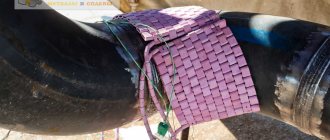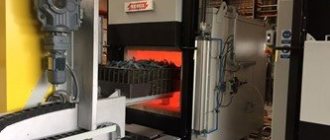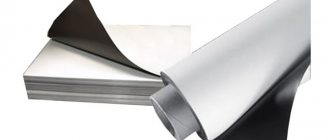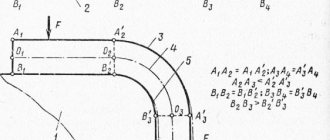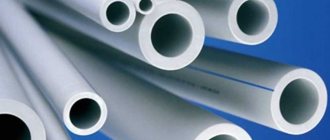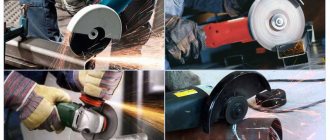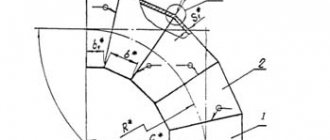Types of welding seams
What types of welds are there? According to engineering design, all welding seams are divided into four main groups:
There are a number of types of welds depending on the type of connection:
- a butt joint seam, when two workpieces with straight ends are butted together and welded into a circular seam with an even seam;
- seam on a T-beam or I-beam. Often used in the production of iron piles or rails;
- overlapping joint seam, when one welded piece lies on top;
- a seam of connections that are located at an angle relative to each other.
Welding electrodes are the main consumables for most types of welding, but the most basic method with which welding work is carried out with electrodes is the electric arc welding method.
Welding machines of any kind, inverter or semi-automatic, are high-quality equipment, but sooner or later the time comes to repair it and remove any faults that have arisen. Read more about repairing welding machines.
What options are used?
Methods for welding circumferential seams depend on the diameter of the pipe itself. Currently there are 2 solutions in use:
- Joints of rings with a diameter of up to 300 mm should be made using a reverse-step method . This is a multi-layer type of welding work, which consists of overlapping the initial and final adjacent layers. The process changes the direction of application to improve reliability.
- With a diameter of 300 and above, it is better to use the “Cross-cross” technique . It is carried out by two specialists with preliminary markings. 8 equal points are applied, which are welded in 2 sections. This allows you to create an ideal weld surface and ensure high strength.
The process of welding circumferential seams is determined by the consumables and equipment used.
Welding ceiling seams
The laying of the ceiling seam occurs in two technological stages, the first of which is welding of the root seam.
For this, as a rule, a “troika” electrode is used - 3 mm. and low current with increasing voltage.
Depending on the conditions in which the work will be carried out, welding work can be performed using two methods:
- If possible, it is advisable to lay the ceiling seam with short, abrupt seams. The thing is that the weld pool is held in the seam only due to the forces of surface tension; if the mass of the seam exceeds these forces, the molten metal will spill down. Separate welding is required at the beginning and end of the common seam (the roots of the seam). Afterwards, it is necessary to weld the metal plates on the reverse side - the ceiling roller - welding the horizontal seams;
- if possible, it is better to weld the metal in the ceiling position using the shortest possible arc. In this case, the metal will solidify into a red-hot, rigid formation immediately after the arc is withdrawn.
To ensure that the seam is not very convex and does not protrude above the level of the metal, it is necessary to maintain a constant welding speed. Vertical seams are welded in exactly the same way.
Technoweld
- 12.08.2019
The task of welding circumferential seams is also encountered in the manufacture of pipelines and elements, large capacitive equipment and in the serial and mass production of small-sized parts.
Each case has its own specifics and the factors that influence it are:
- Warming up the product as the weld is completed. When welding large-sized structures and surfacing, preheating is often necessary to avoid cracks and monitor the actual temperature of the product. The latter is more important when surfacing, since a change in surface temperature changes the composition of the deposited layer and its properties. To ensure the constancy of the properties of the deposited metal, it is possible to perform surfacing with heating in the temperature saturation mode, with the application of beads scattered. Sometimes, by changing the deposition mode and the degree of overlap of layers, it is possible to obtain a layer with uniform properties even with a significant change in the temperature of the part. In this case, during the surfacing process, it will be necessary to repeatedly change the mode programmatically during the process of surfacing the zone on the part. This method is applicable to welding circumferential seams of dimensional products, but only partially - in terms of performing filling passes for cutting the weld and in terms of saving time when transitioning between welding different passes of the seam.
- When welding small-sized products, pipes of small diameters, heating as the circumferential seam is welded often becomes critical. From the point of view of mode optimization, the seam should be divided into sectors with different welding mode parameters for each; In addition, when the parts being welded are heated unevenly, a displacement of the penetration zone to one of the edges may occur (during TIG welding), which must be compensated either by increasing heat removal or by moving the torch from the center of the joint. The second circumstance is the need to ensure overall high productivity of the welding installation, taking into account the required time to reload the parts and, taking into account the possible increase in welding speed due to more precise control of the process. Combining operations in the form of assembly and alignment of parts before welding in or with the help of a machine can somewhat lengthen the welding cycle of one circumferential seam of a part in a machine, however, the overall labor intensity can be significantly reduced.
- In mass production, the cost per defective part can be prohibitive. An example below about heat dryers - one product may contain a couple of dozen such seams; defects in any of them can be revealed during operation and the corrosive effects of water from the inside. This is possible as a result of local overheating during welding and vice versa - if the cross-section of the circumferential weld is insufficient and is unlikely to be detected by crimping during quality control before releasing products from the line. At the same time, this will lead to the return of the entire product worth up to several tens of thousands of rubles due to defective welding of one part worth a couple of rubles. In view of this, in installations that are designed for welding circumferential seams in continuous production, measures are thought out and implemented to prevent defects or quality control according to the actual welding parameters of a particular product, with further either control or rejection of the questionable unit before further operations with it.
Welding of circumferential seams when welding end parts to stainless steel pipes of small diameter
In the video below, a flat plug is positioned when clamping a part on a circumferential seam welding machine with an accuracy of up to 0.05 mm and is welded with a circumferential seam using TIG pulse welding without filler wire to form minimal seam reinforcement. The strengthening of the seam and the maximum displacement of the plug from the pipe axis must be controlled because the pipe subsequently undergoes grinding and polishing, and similar defects, as well as weakening of the weld, will lead to high costs for grinding operations in the circumferential seam area. Everything is solved by simple equipment on the welding installation for circumferential seams and programmable changes in the welding speed as the joint is completed to control penetration as the end of the pipe heats up during the welding of the end piece. The accuracy of rotation of the equipment in this case turns out to be critical, since even small misalignments lead, at a minimum, to the need to at least perform the initial tack of the annular joint in automatic mode in order to avoid displacement of parts during welding. This operation is available on this installation - this leads to an increase in operating time for assembling and welding the product, and the plug can be welded without preliminary tacking. When welding threaded couplings and fittings, preliminary tacking is still required, but solely because of the difficulty of ensuring sufficiently accurate assembly of the parts themselves. Tack welding is performed automatically by the circumferential welding machine, followed by welding of the circumferential seam.
Welding (welding) of hydraulic cylinder eyes.
An assembly option using resistance welding for initial assembly and MIG-MAG welding for further welding of the joint in order to increase strength properties is used not only in hydraulic cylinders, but also in welding in the manufacture of shock absorbers, gas springs, rods and other car suspension parts. In this case, the volume of the groove to be filled changes and the installation for welding circumferential seams, when performing an operation in two revolutions of the part, changes the operating mode of the welding machine, the rotation speed, the swing and speed of the lateral oscillations of the torch, the height of the torch above the product according to the laid down multi-step program. The entire welding operation of a circumferential multi-pass weld is performed with one load of the part onto the installation.
Welding of truck and bus wheels
In this case, the speed of welding of circumferential seams during assembly and welding of the disk with the rim should be commensurate with the speed of the workpiece and the rolling out of the rim and disk itself. According to the technology, the rim blank is welded by flash butt welding and this process can take 40.. 50 seconds, including even manual loading and unloading of parts from the machine. The arc welding process turns out to be longer - welding the circumferential seam of a wheel on a machine can last about 1.5 minutes and longer in the case of low-speed welding processes. From the point of view of line productivity, in this case it is necessary to install at least two installations for welding the circumferential seams of wheels and organize the transportation of parts to work stations and further along the line. Of course, loading and unloading should be optimized and not take up welding time - there are such installations with two rotators on a turntable. However, from the point of view of line layout, it is not always possible and rational to install two or more installations - space may not allow or costs may be required to organize the supply of parts to a distant second installation for welding wheels. For such a case, a “double” installation was created; footage from the setup of which in a long-existing wheel production line is in the video.
This circumferential weld installation uses:
- Two sets of equipment for two arc welding Fronius Time Twin with control via a digital interface, during the welding of a circumferential seam, the installation can automatically change the preset task called up to work from the memory of each welding source and change the welding speed. Through this, a constant penetration and heat input is achieved in the start zone and in the overlap zone of the circumferential weld.
- The Time-Twin welding process itself has high productivity with reduced heat input and spatter with increased stability of the two arcs - this minimizes subsequent operations for cleaning the wheels before painting, allows you to obtain a uniform weld when the geometry and thickness of the wheel parts deviate, ensuring the necessary strength characteristics of the entire wheel in in general. An important parameter is not only the geometry of the seam, but also what the stress state of the product as a whole will be after welding and cooling.
- Independent control of each part of the installation - welding of the circumferential seams of wheels can be carried out according to different programs - for example, if there are two different seams in one wheel, you can reload the wheel from rotator to rotator without creating an interoperational backlog and without transporting the wheel from one welding installation to another.
- Control of arc interruption, control of wire sticking, control of the safety perimeter when turning the platform is available, control of the presence of shielding gas, wire, deviations of the actual parameters of the welding mode, cycle counter before servicing the torch, welded parts.
Welding of valves “for welding”, surfacing of sealing bands on the valve wedge.
The valve has a cast body which may have casting defects. However, this does not affect the operational properties of the valve itself, since its thickness and strength are large. In the production of valves that are mounted not through a flange connection, but by welding to a pipe, it is important to ensure the absence of defects in the area adjacent to the weld, and one of the methods for producing such a product is to weld into the valve a transition piece made from rolled pipe (not cast) with a cast valve body double-sided seam.
- The cross-section of the seam in this case is large; in addition, as the circumferential seam is completed, casting defects in the form of pores and inclusions on the side of the cast valve body may be exposed. Practice has shown that the strength properties do not suffer even with small defects in these circumferential welds, however, an extended defect can lead to failure of the valve.
- Making one multi-pass weld without pauses causes local overheating of the metal with a sharp decrease in the strength properties of the product as a whole. But alternating execution of two seams (internal and external) allows welding to be carried out practically without pauses.
The task of welding circumferential seams was realized using an installation consisting of a welding column with servo drives along two axes and a welding rotator with control of the angle of rotation and inclination. The entire welding sequence is specified as a frame-by-frame execution of circumferential welds (or parts thereof) with different modes, torch positions and transitions between them; or the end of the welding sequence of girth weld passes. After completing the sequence for the outside, the machine automatically switches from one side of the part to the other to continue welding and intermediately cool the seam that may not yet be completely welded.
A system for correcting the position of the burner along the joint was not used since the part being welded is quite accurate, and the dimensional deviations of the valve body itself can be compensated once by the operator by manually correcting the position of the burner before making the first seam. The default correction entered will be applied to all positions during further welding of many passes of circumferential seams in this product - a “weld weld” valve. Surfacing on the valve wedge was carried out using the same installation, while the operating mode of the welding machine (MIG-MAG), the speed and degree of overlap of the rollers change as the part heats up. As a result, the layer is homogeneous and suitable in terms of mechanical properties and composition in one pass. In contrast to the previously used method of submerged surfacing, in the presence of defects in the casting, the defects are revealed during the surfacing process and, if the volume of the defect is small, they do not remain in the deposited layer at all (they are corrected when the bead is overlapped in the next pass). If there are volumetric defects after surfacing, they remain visible and not inside the layer and are easily identified by external inspection. This allows you to monitor their quantity and correct them even before heat treatment of the part after surfacing. Alas, a mechanical defect identified at the beginning is difficult to correct during machining or grinding of the wedge. The hardness and workability of the material in the area of the corrected defect is different from the rest of the surface and this leads to both mechanical processing defects and local defects during operation, therefore it is more economically feasible, even with a less productive surfacing process, to identify and correct the defect at an early stage of manufacturing (or reject the part) than to allow detection already at the final stage of production.
What may be important when selecting circumferential weld welding installations for mass production.
It is difficult to list all the factors, since lines and production chains of even similar products can be built differently.
- Productivity must be assessed in conjunction with quality requirements and real deviations and condition of workpieces. It is also worth understanding at least approximately or having data on the cost of correcting a defect or losses from it and linking the technology with the possibility of minimizing such losses. An example from a line with welding wheels: – The power of the sources allows welding to be carried out at a speed of about 170 cm per minute, however, since the transfer at high currents begins to break from droplet to jet, the composition of the metal begins to change, as does the yield strength of the material during upsetting (manganese burns out ) – The heat input turns out to be different and the parts are heated locally; thus, the stress level at the end of welding is even reduced, but to achieve the required service life under alternating loads, the interference when fitting the disk into the rim and its value in the weld zone after welding are important! The tension should not weaken, since if there is insufficient tension, the life of the wheel decreases under alternating loads. The result was a reduction in the welding speed to less than 125 cm per minute - at such a speed, the required stress state in the product began to stably provide the required service life of the wheel.
- Assembling a part for welding, loading and unloading parts for installation are, as it were, part of the welding operation of the part. They can have a strong impact on the final productivity, labor intensity and consistency of the quality of welded parts. In this case, it is possible to use correction systems for both the position of the torch along the joint and scanning systems with the ability to track deviations in the groove shape and correct the entire welding mode, but this also complicates and increases the cost of the installation (for example, for welding circumferential seams), and often additional time costs for every detail. When choosing, it is worth going from the other side - from the point of view of the ability to ensure uniform assembly and position of parts during welding, and in any case, pay a lot of attention to the issues of loading/unloading parts into/from the installation.
- The use of welding robots with the necessary peripherals can make the cell more versatile, but this is not always cost-effective or necessary. Despite the general reduction in the cost of welding robots, the cost of creating a cell based on a robot often turns out to be much more expensive than a specialized installation, and the positioning speed and versatility of the robot are not really in demand during work.
Typical designs and some implemented solutions for welding circumferential seams can be viewed at the link.
If you are interested in any installation for welding circumferential seams, you can leave your request by briefly describing the task right here, in the form below.
Welding fillet welds
When welding a corner joint, you can use different techniques depending on the angle:
- two workpieces are located perpendicularly. In this case, only the inner joint itself can be welded, since the area of the main force for bending and tearing is located here. When welding tubes located at an angle, it is necessary to make a concentric seam around the circumference;
- angle 60 degrees or less. In this case, two workpieces are completely boiled on both sides. It is prohibited to weld such joints using tack welds.
About the use of electric welding
When joining pipes with a wall thickness of 3 mm or more, electric welding is usually used. During the installation of main pipelines, one of two schemes is used for this:
- pipes are routed to their future location, after which they are connected using modern butt joint machines;
- Single pipe products are welded into sections at specialized bases, after which the prepared structures are transported to the route, where they are connected into a continuous network.
In practice, the second method is more often used.
The calibrated ends of single pipes, ready for welding, are centered using clamps, clamps and other assembly devices. After checking such an assembly, the joints are grabbed in three places. If work is carried out with pipes of large diameters, such tacks are placed at a distance of 35-40 cm from each other (then their number can increase). Domestic specialists, as a rule, use multilayer welding in such cases - this has a positive effect on both the structure and the density of the seam.
Welding circumferential seams
Cylinders, shafts, round tanks, barrels and other cylindrical spare parts and products are an area in which the use of circumferential welding seams is widespread.
Since welding of cylindrical products and laying of circumferential seams is often used in the production of elbow and straight pipes, the process is often automated - resistance seam welding.
But, if the seam is made by hand, then the following technology must be followed:
It is necessary to weld the seam only from the outside, this is explained by the elementary inaccessibility of laying the seam inside the pipeline. In the case of welding shafts, preliminary end brazing can be done. The depth of the seam should not exceed 5-6 mm.
Submerged arc welding is a high-quality method of joining two metals using electric arc welding, when the melt pool - the weld pool is protected from atmospheric air by a layer of powdered flux.
Read about aluminum cutting here.
Cleaning welds after welding
After laying the weld, it is necessary to clean the seam in order to remove slag and scale. Cleaning weld seams is carried out in three stages:
Cleaning the area around the seam. It is necessary to clean the entire surface of the metal around the seam, since during the welding process scale or droplets of hot metal could get onto the surface of the metal. They need to be beaten off with a chisel or hammer. After this, you can treat the surface with an antioxidant compound.
Welding defects
As a rule, defects in welding seams arise due to non-compliance with welding technological standards, poor-quality electrodes, the occurrence of stray currents and the entry of atomic air particles into the weld pool.
All weld defects are compiled into a single standard, which sets technical requirements for welding joints.
The standard also regulates the control of welding seams, which includes technical testing and sound flaw detection.
According to this standard, defects in welded joints are divided into six groups:
- cracked seams, cracks;
- craters and holes, fistulas that are formed by the process of sparking and cavities in the weld pool;
- solid inclusions – electrode scale, metal spasms;
- unwelded areas, lack of metal connection;
- seam shape that does not meet the welding technology.
These defects stand out as the main ones.
Welding seams are permanent connections of metals, therefore increased demands are placed on the production of welded seams.
Compliance with all standards and technology will allow you to lay high-quality and reliable seams of any category.
